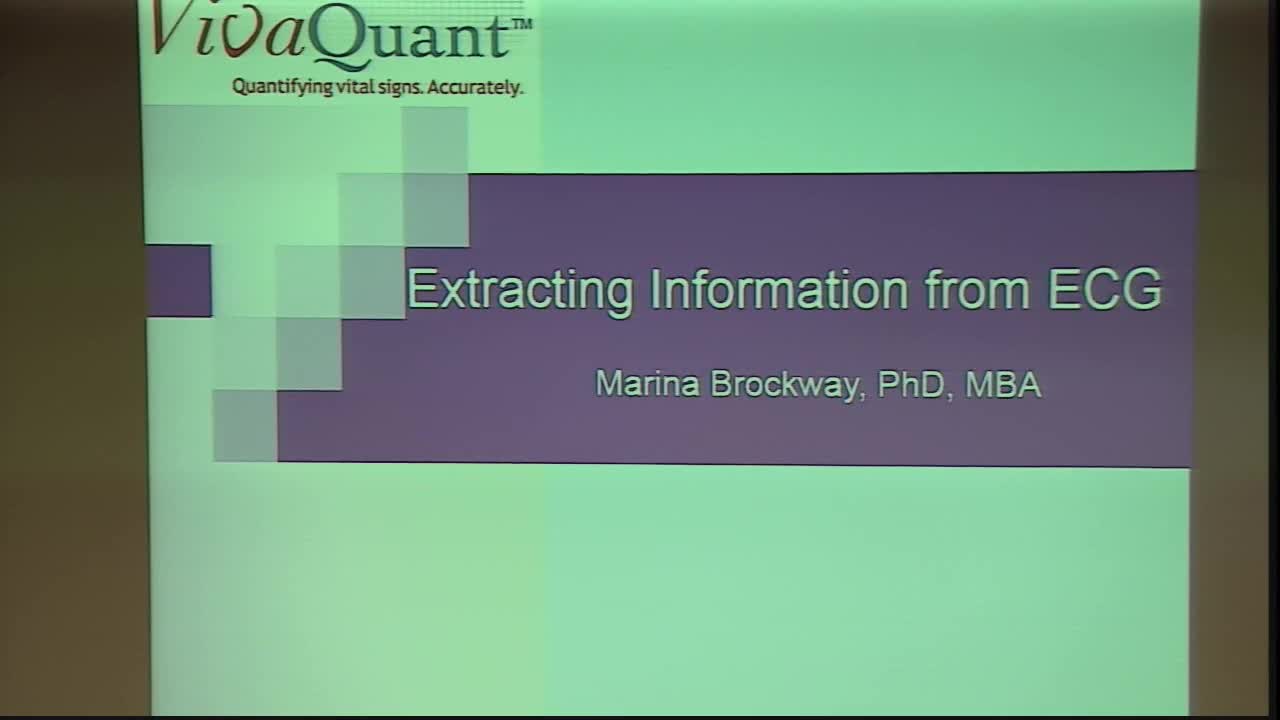Extracting Information from ECG Using Robust, Computationally Efficient Methods
Presenter
April 4, 2014
Abstract
The availability of ultra-low-power computing devices, low-power radio communications, and the internet of things is bringing about a revolution in body worn devices for monitoring and diagnosing health and fitness. Accurate extraction of information from the signals measured by these devices can be challenging, especially for signals such as electrocardiogram (ECG) that become quite noisy during patient movement. ECGs are commonly monitored to obtain heart rate (HR), arrhythmia incidence, and interval measurements that can indicate whether electrical currents are being conducted normally through the heart. For example, it’s common for people to monitor their HR during exercise. Advances in fabrics and materials is bringing about new, more comfortable, garments with embedded ECG electrodes that are easy to wear but result in extremely noisy ECGs that make extraction of even simple information such as HR quite difficult. Another example is monitoring ECG in drug safety studies in ambulatory subjects to measure PR, QRS, and QT intervals. These studies are required on all drugs to obtain marketing approval from the FDA and foreign regulatory bodies. The challenge in this application is to provide accurate measurements with low variability, despite the presence of noise.
Yet another example is the monitoring and diagnosis of patients with transient ventricular and atrial arrhythmia using small body worn devices such as event recorders and mobile cardiac telemetry. This latter example represents a very large societal need and market opportunity, as roughly 2.6 million patients undergo this procedure annually in the US. This number will grow significantly as the population ages. A significant issue with current technology is that subpar sensitivity and specificity of ECG arrhythmia detection algorithms results in a longer than necessary time to diagnosis and a high number of false positive events. This translates to a much higher than necessary cost of care for these patients.
To address these issues, VivaQuant, with support from the National Institute of Health, has developed a novel embedded algorithm for processing ECGs in body worn devices. This algorithm provides 95% reduction in in-band noise amplitude without distorting ECG morphology and provides arrhythmia event detection accuracy that is far superior to existing algorithms. The algorithm is also very computationally efficient, requiring only about 60 micro-watts to process a single lead ECG in real time. This algorithm will enable the development of very small battery powered body worn devices for monitoring patients undergoing monitoring and diagnosis of cardiac arrhythmias.
Marina Brockway is founder and Chief Technology Officer at VivaQuant, a company focused on developing technology for accurate and efficient extraction of information from ECGs and other physiological signals. Prior to that, she worked at the Cardiac Rhythm Management Division of Guidant/ Boston Scientific. She was an Industrial Postdoctoral Fellow at the Institute for Mathematics and its Applications in 1997-1999. Dr. Brockway has a PhD in Applied Mathematics and an MBA. She is named as an inventor on 68 issued and pending patents.
